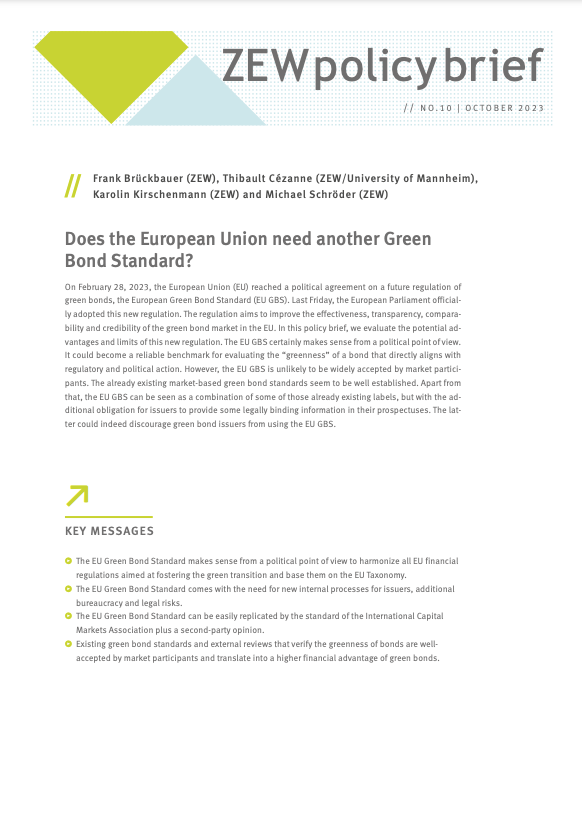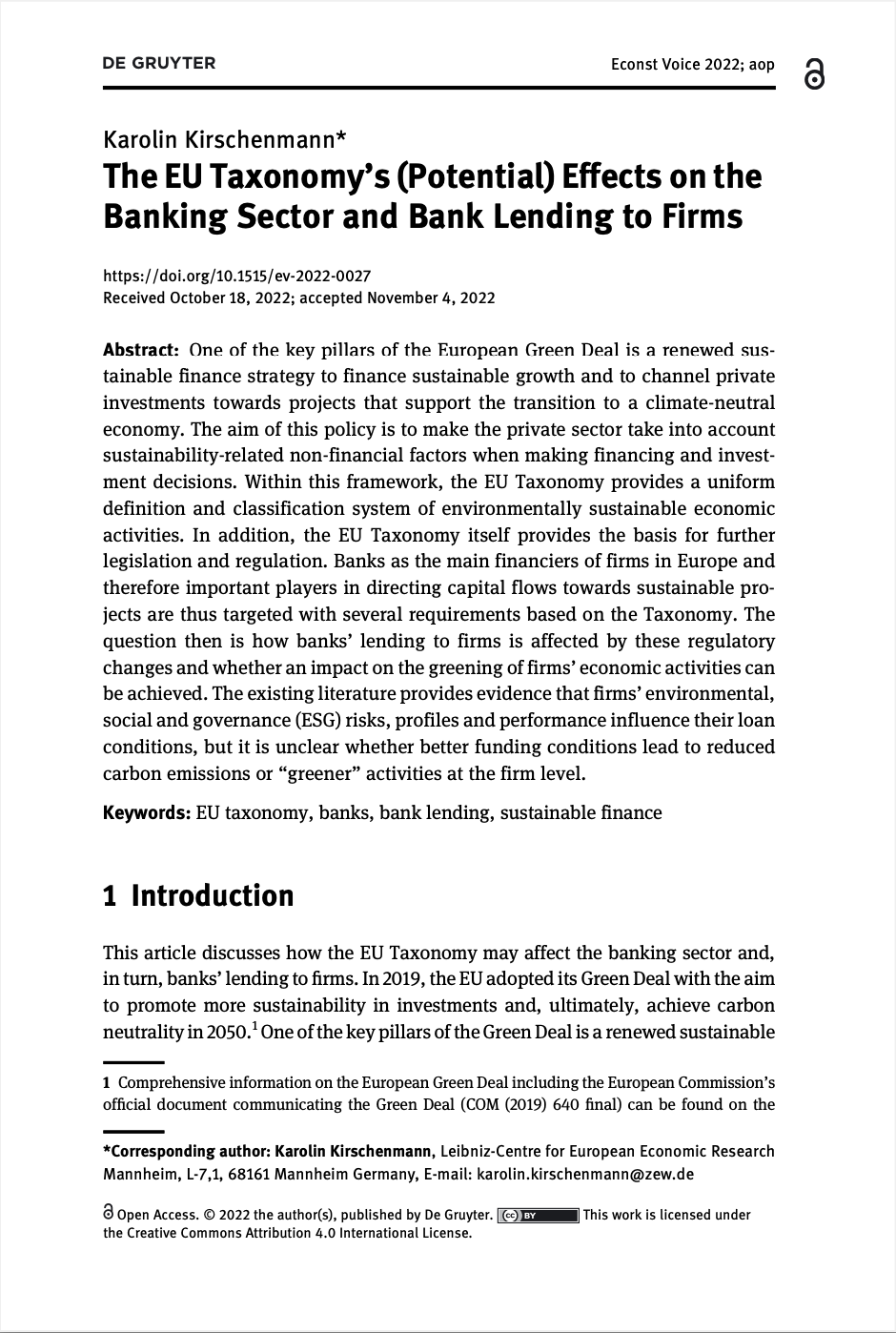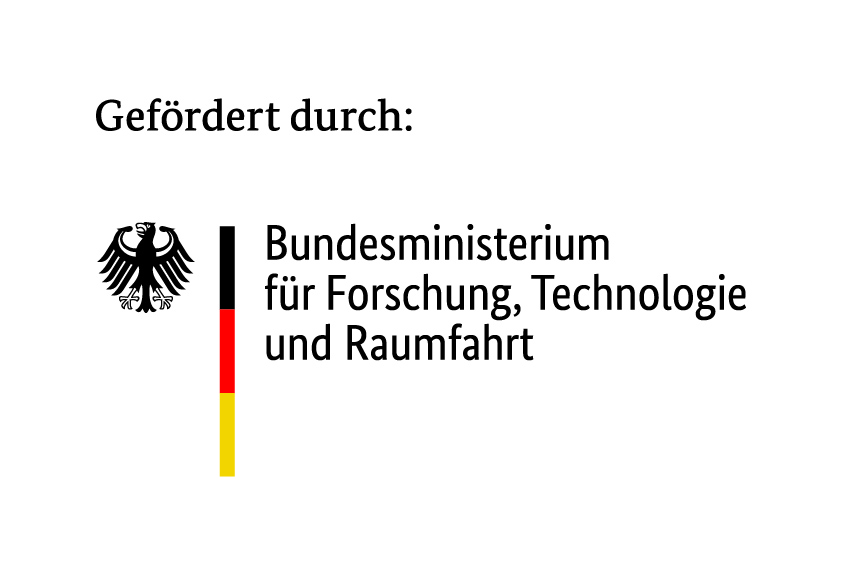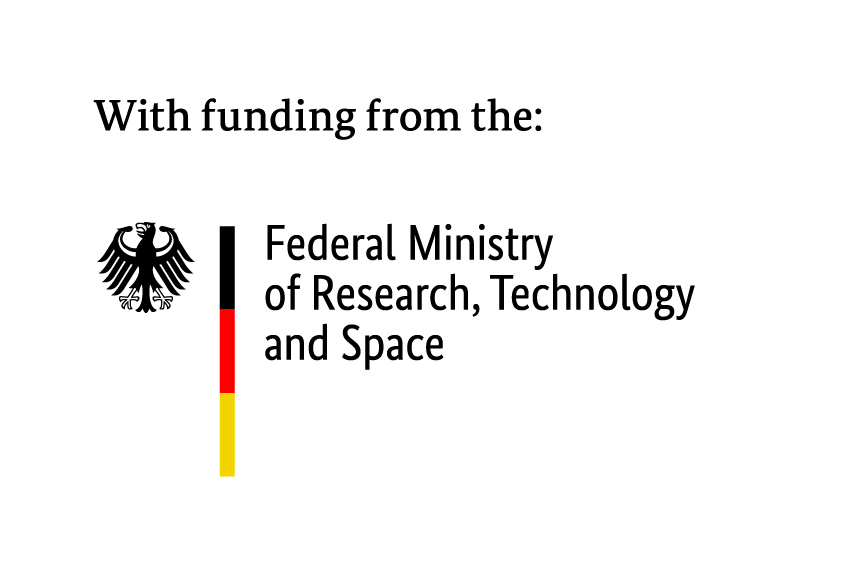Green Financial Intermediation – From Demand to Impact
INTERACT
Das Verbundprojekt „Green Financial Intermediation – From Demand to Impact” (INTERACT) hat zum Ziel, zu untersuchen, über welche Wirkungskanäle der Finanzsektor zur Erreichung der klimapolitischen Ziele beitragen kann. Darauf basierend sollen Politikempfehlungen zur Verbesserung des gesamten Prozesses der Finanzintermediation abgeleitet werden.
Das Verbundprojekt besteht aus zwei Teilprojekten, die durch eine übergeordnete Gesamtkoordination eng verbunden werden sollen.
Gesamtkoordination und -leitung des Verbundprojektes
Die Berücksichtigung der Wechselwirkungen und Interdependenzen zwischen den verschiedenen Analyseebenen (Kapitalangebot, Transmissionsmechanismen, Kapitalnachfrage und Klimaauswirkungen) ist von entscheidender Bedeutung, um abzuleiten, wie Green Finance als Katalysator für die Dekarbonisierung wirken kann. Die Konsolidierung der Projektergebnisse ist daher eine wichtige Grundlage für die Dissemination und die praktische Anwendung der Ergebnisse. So soll auch der Dialog zwischen Forschenden und relevanten Interessengruppen im Bereich Green Finance sowie der breiteren Öffentlichkeit in allen Phasen des Projekts gefördert werden.

Dr. Karolin Kirschenmann
Teilprojekt 1: Anlageverhalten privater Haushalte und Transmissionsmechanismen
Das erste Teilprojekt analysiert das Anlageverhalten privater Haushalte, um zu ermitteln, wie „grüne Präferenzen“ in nachhaltige Investitionen gelenkt werden können. Zudem werden Transmissionsmechanismen auf Kapital- und Kreditmärkten untersucht, die dazu beitragen, dass die Finanzierungsbedingungen eines Investitionsprojektes von dessen Klimafolgen abhängig sind. Mittels spieltheoretischer Modellierung, Experimenten und empirischen Analysen werden Marktmechanismen und Bedingungen hergeleitet, unter denen Investitionen in grüne Projekte ihre optimale Wirkung entfalten können.

Prof. Dr. Tabea Bucher-Koenen
Teilprojekt 2: Finanzintermediation auf Unternehmensebene

Marie-Theres von Schickfus
Publikationen von INTERACT
INTERACT I Does the European Union need another Green Bond Standard?

Does the European Union need another Green Bond Standard?
On February 28, 2023, the European Union (EU) reached a political agreement on a future regulation of green bonds, the European Green Bond Standard (EU GBS). Last Friday, the European Parliament officially adopted this new regulation. The regulation aims to improve the effectiveness, transparency, comparability and credibility of the green bond market in the EU. In this policy brief, we evaluate the potential advantages and limits of this new regulation. The EU GBS certainly makes sense from a political point of view. It could become a reliable benchmark for evaluating the “greenness” of a bond that directly aligns with regulatory and political action. However, the EU GBS is unlikely to be widely accepted by market participants. The already existing market-based green bond standards seem to be well established. Apart from that, the EU GBS can be seen as a combination of some of those already existing labels, but with the additional obligation for issuers to provide some legally binding information in their prospectuses. The latter could indeed discourage green bond issuers from using the EU GBS.
- Veröffentlichungsdatum: Oktober 2023
- Autor:innen: Frank Brückbauer, Thibault Cézanne, Karolin Kirschenmann & Michael Schröder
- Publikationsart: Policy Brief
- Link zum PDF-Dokument
INTERACT I The EU Taxonomy’s (Potential) Effects on the Banking Sector and Bank Lending to Firms

The EU Taxonomy’s (Potential) Effects on the Banking Sector and Bank Lending to Firms
One of the key pillars of the European Green Deal is a renewed sustainable finance strategy to finance sustainable growth and to channel private investments towards projects that support the transition to a climate-neutral economy. The aim of this policy is to make the private sector take into account sustainability-related non-financial factors when making financing and investment decisions. Within this framework, the EU Taxonomy provides a uniform definition and classification system of environmentally sustainable economic activities. In addition, the EU Taxonomy itself provides the basis for further legislation and regulation. Banks as the main financiers of firms in Europe and therefore important players in directing capital flows towards sustainable projects are thus targeted with several requirements based on the Taxonomy. The question then is how banks’ lending to firms is affected by these regulatory changes and whether an impact on the greening of firms’ economic activities can be achieved. The existing literature provides evidence that firms’ environmental, social and governance (ESG) risks, profiles and performance influence their loan conditions, but it is unclear whether better funding conditions lead to reduced carbon emissions or “greener” activities at the firm level.
- Veröffentlichungsdatum: 04.11.2022
- Autor:innen: Karolin Kirschenmann
- Publikationsart: Paper
- Link zum PDF-Dokument



